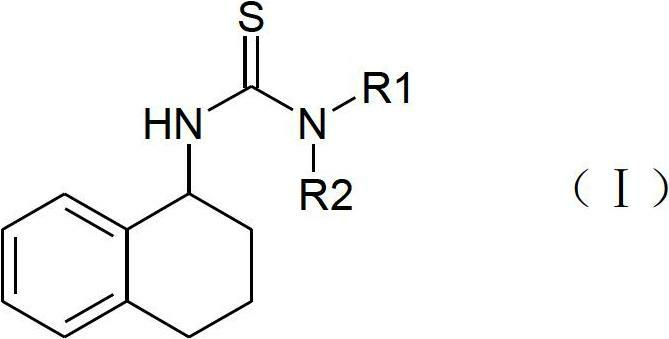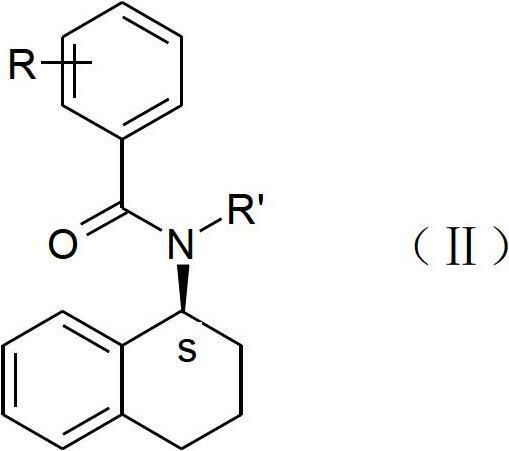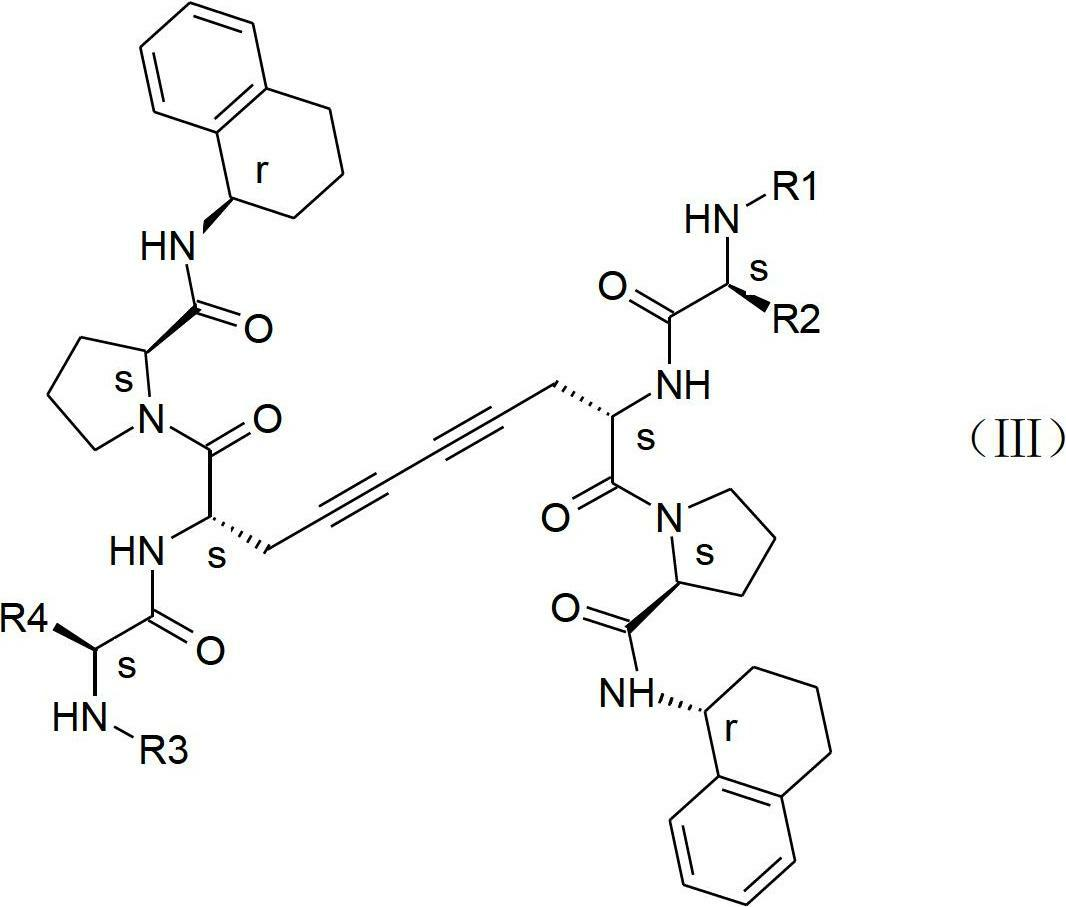Resolving and racemization method for 1-amino-1,2,3,4-tetrahydronaphthalene
A technology for tetralin and tetralin crude products, which is applied in the purification/separation of amino compounds, preparation through nitrogen-oxygen/nitrogen-nitrogen bonds, organic chemistry, etc. too good and so on
- Summary
- Abstract
- Description
- Claims
- Application Information
AI Technical Summary
Problems solved by technology
Method used
Image
Examples
Embodiment 1
[0061] 3,4-dihydro-1-(2H)-naphthalenone oxime (the raw material 3,4-dihydro-1 ( 2H)-naphthalene oxime.) Reduction to mixed 1-amino-1,2,3,4-tetralin, the reaction formula is as follows:
[0062]
[0063]Add 200ml of anhydrous methanol to a 500ml three-neck flask, then add 10.0g of 3,4-dihydro-1(2H)-naphthalenone oxime (62.1mmol) and stir for 10 minutes, and the raw materials are completely dissolved. First replace the air in the bottle with nitrogen, then under the protection of nitrogen, add 0.5g of wet palladium carbon (Pd / carbon, 10%) containing 50% water, and then replace it with hydrogen for more than three times, then at room temperature (20-30°C) , stirred for 15-20 hours under normal pressure (0.95-1.05atm). Thin-layer chromatography showed complete disappearance of the starting material spot and only new spot appeared.
[0064] Filter under the protection of nitrogen, wash the filter cake twice with 20ml and 20ml of anhydrous methanol, combine the mother liquor, c...
Embodiment 2
[0067] Add 70ml of anhydrous methanol to a 250ml three-neck flask, then add 10.0g of 3,4-dihydro-1(2H)-naphthalenone oxime (62.1mmol) and stir for 10-20 minutes, the raw materials are completely dissolved. Under the protection of nitrogen, add 0.3g of wet palladium carbon with 50% water content (Pd / carbon, 10%), and then replace it with hydrogen for more than three times, stir at room temperature (20-30°C) and normal pressure (0.95-1.05atm) for 15 -20 hours. Thin-layer chromatography showed that some raw material points remained, and the product 1-amino-1,2,3,4-tetrahydronaphthalene new point and by-products of deamination appeared. Column separation, yield 30-70%.
Embodiment 3
[0069] The vortexed 1-amino-1,2,3,4-tetralin obtained in Example 1 was first resolved with an L-type acidic resolving agent to separate (S)-1-amino-1,2,3, 4-tetrahydronaphthalene, and then use D-type acidic resolving agent to resolve (R)-1-amino-1,2,3,4-tetrahydronaphthalene. Concrete reaction process is as follows:
[0070] Add 30.6g (0.204mmol) of L-tartaric acid into 300ml of anhydrous methanol and stir for 10-15 minutes to dissolve it completely. Subsequently, 30 g (0.204 mmol) of vortexed 1-amino-1,2,3,4-tetralin was added, the temperature was raised to reflux, and the mixture was stirred for 10-15 minutes. Cool to room temperature (20-25°C) and stir at this temperature for 0.5 hours. During the cooling process, many white solids were precipitated.
[0071] Warming up to reflux again, stirring for 0.5 hour, and making all solids dissolve completely, then slowly cooling down to room temperature in 1-2 hours, followed by stirring at room temperature for 2 hours, filterin...
PUM
 Login to View More
Login to View More Abstract
Description
Claims
Application Information
 Login to View More
Login to View More - R&D
- Intellectual Property
- Life Sciences
- Materials
- Tech Scout
- Unparalleled Data Quality
- Higher Quality Content
- 60% Fewer Hallucinations
Browse by: Latest US Patents, China's latest patents, Technical Efficacy Thesaurus, Application Domain, Technology Topic, Popular Technical Reports.
© 2025 PatSnap. All rights reserved.Legal|Privacy policy|Modern Slavery Act Transparency Statement|Sitemap|About US| Contact US: help@patsnap.com



